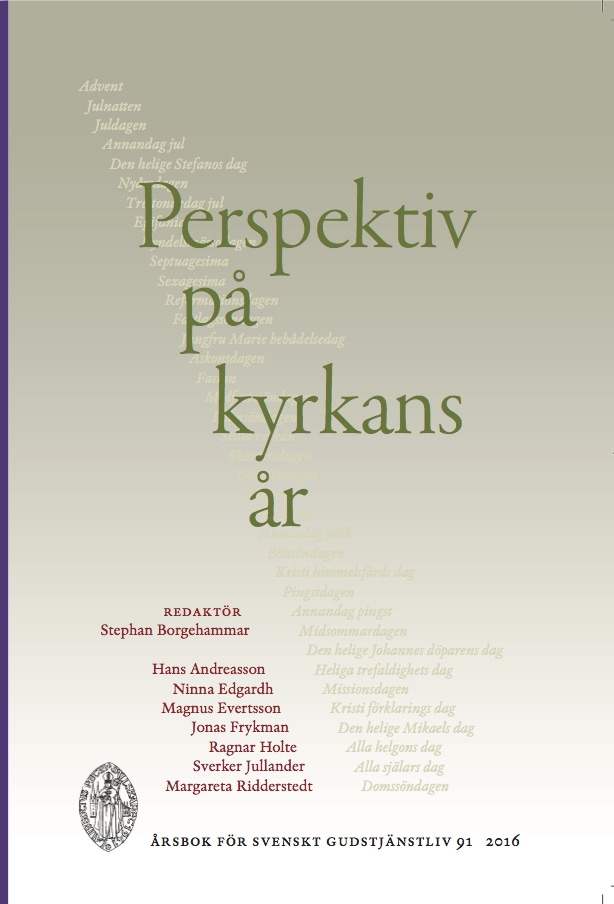Halloween i kyrkoåret
Abstract
Halloween in the Liturgical Year
All Saints’ Day is an occasion to remember, singly and together, those who have passed away. It has in a brief period of time reached a status where it is taken for granted as an important part of the Swedish annual cycle of celebrations. Since it requires none of the props that characterize other annual feasts, it has not become much commercialized. It retains its integrity by being about ourselves and those we love. In the spirit of our times, All Saints is well adapted to a mood where feelings – sorrow as well as happiness, the sense of loss and suffering – are displayed, acknowledged and taken seriously. Unlike in other countries, All Saints’ Day has not in Sweden become associated with conviction, nationalism or the cultural heritage. Nor has it, like St. Lucy’s Day, Christmas food or Midsummer, received the label ”typically Swedish”, and has thus remained a custom that cannot be expropriated by other interests.
The initial reception of Halloween has in some measure been conditioned by the fact that it occurs at the same time as All Saints. No other new custom has been so roughly treated in public debate. Its advent has been interpreted as a sign of the return of paganism, of cultural decadence, of the moral decline of youth and of commercialism’s reification of all human relations. It seems paradoxical that two celebrations have come into conflict over an alleged message that neither of them actually conveys.
Halloween has developed into a children’s custom, an event that entices youngsters to do what youngsters have always been interested in: to challenge and to explore areas where the adult world has not already been. Like other important feasts of the calendar, such as Christmas, New Year, Easter and Midsummer, its commercial exploitation has been profitable, which, of course, has contributed to its popularity. And like the feasts just mentioned, apart from New Year, it has established itself at knee level. Children and families are the agents, and it is to them the market turns.
The customs of Halloween and All Saints cleary engage different ages, but also different social contexts. Halloween demands mutuality and exercizes social control in local society. When children come and knock they must be received kindly, or else there will be consequences. Who the children go to and who they don’t reveals who is liked and who is feared in the neighbourhood. When parties are organized in schools and clubs, parents are often asked to cooperate. In this way, Halloween has helped to strengthen local society and create bonds where bonds were absent.
A scrutiny of Halloween in comparison with All Saints clearly shows the importance of raising ones gaze from a custom in order to regard its context. After all, customs and other forms of prescribed behaviour do not govern us; it is we who use them for a number of specific purposes. That is what sustains them.
Downloads
Published
Issue
Section
License
© the authors, Laurentius Petri Sällskapet för Svenskt Gudstjänstliv and Artos & Norma Bokförlag. Copying and using material from Svenskt Gudstjänstliv for scholarly purposes is permitted as long as the source is indicated. For other uses, please contact the respective author as well as the publisher. Special restrictions may apply to images.


